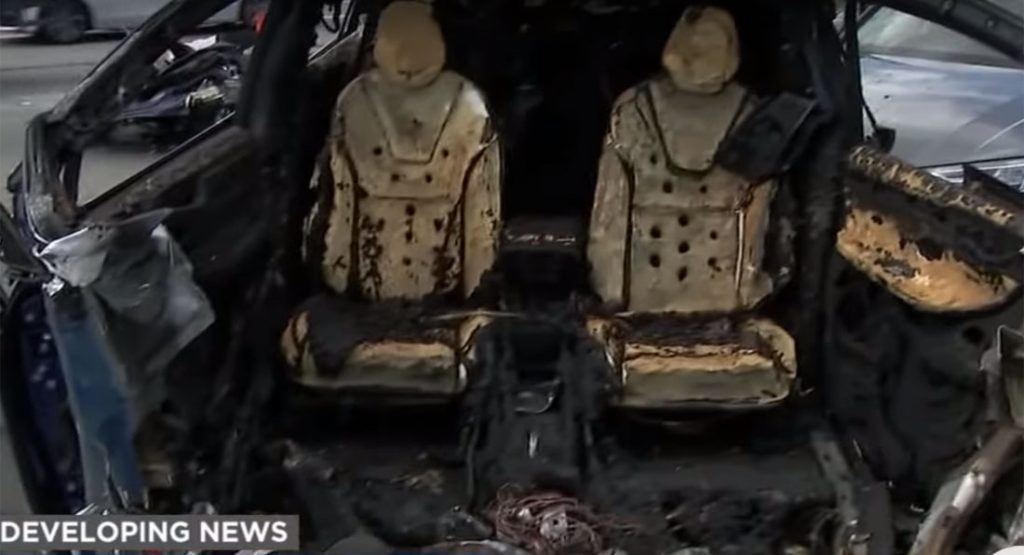It has emerged that the battery pack of a Tesla Model X involved in a fatal crash in March reignited six days after being extinguished.
On March 23, a Model X driven by a 38-year-old crashed into a safety barrier on Highway 101 in California, killing the driver and destroying much of the electric SUV. As it turns out, fire authorities had an exceptionally difficult time controlling the subsequent fire.
KTVU 2 reports that fire crews initially extinguished the blaze in a couple of minutes but it then reignited multiple times over the next week.
“The battery began to overheat even though we had already cooled the battery and it continued to reignite. We don’t have the tools to deal with a battery that is completely, basically destroyed,” Mountain View Fire Chief Juan Diaz said.
“In this particular case, six days later, the temperature inside those cells increased to the point of ignition. That’s why the car reignited. You have stored energy that is frankly unstable.”
Firefighters around the world are being challenged by electric vehicles
The Tesla Model X, like many other electric vehicles, has a cut loop, or kill switch, which can be severed by fire crews to stop the flow of electricity in the battery. However, this safety device was destroyed in the California crash, leaving authorities with no way to cut the power.
Diaz says that the battery was only declared safe two weeks later after the NTSB and Tesla had de-energized it.
After the crash in California, Tesla issued a statement asserting that its vehicles are much safer from fires than ICE cars.
“Tesla battery packs are designed so that in the rare circumstance a fire occurs, it spreads slowly so that occupants have plenty of time to get out of the car. According to witnesses, that appears to be what happened here as we understand there were no occupants still in the Model X by the time the fire could have presented a risk. Serious crashes like this can result in fire regardless of the type of car, and Tesla’s billions of miles of actual driving data shows that a gas car in the United States is five times more likely to experience a fire than a Tesla vehicle.”







